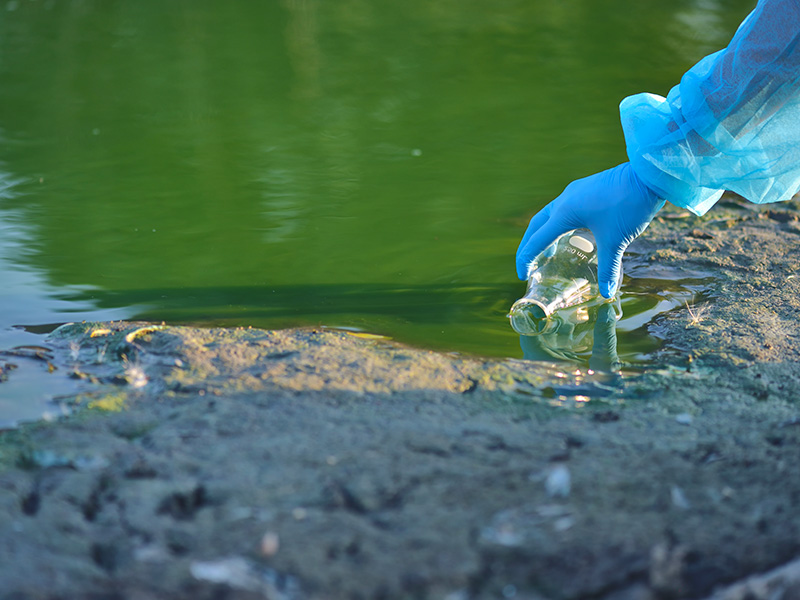
PFAS: Navigating the Regulatory Environment and Risk Exposure
By Alliant
Background on PFAS
PFAS (per-and polyfluoroalkyl substances) have generated a variety of regulatory responses and litigation in the past two to three years. Across the country, regulators are working to assess the exposure pathways and find justified solutions to clean up without causing undue alarm to the general public. PFAS are commonly used in cleaning products, water-resistant fabrics, non-stick cookware, surfactants, and fire retardants and they have been found in soil and groundwater throughout industrial areas across the country. The far-reaching extent of PFAS is something to be concerned about, but knowing more about PFAS and ways to reduce harm can help alleviate fear and offer solutions for addressing this risk.
The First Wave of PFAS Litigation
Third-party claims against the manufacturers of PFAS have been in the courts for the past four to five years, with many large manufacturers paying multi-billion settlements. Subsequent waves of litigation may impact businesses that make, buy or sell products containing PFAS. Suits resulting in settlements alleged that the companies knew or should have known of PFAS toxicity and continued to use them despite the research linking these compounds to cancer, thyroid disease, liver damage, and fertility problems.
"6,400 PFAS-related lawsuits were filed in federal courts between July 2005 and March 2022."
The Evolving PFAS Regulatory, Legislative and Technology Landscape
State Regulations
Various states have banned the use of PFAS and state agencies have been active in regulating concentrations in drinking water and other commercial and industrial water uses. Eleven states now regulate food packaging containing “intentionally added PFAS,” though some states go beyond food packaging to include other consumer products. California bans the sale of cookware containing PFAS unless the seller discloses the presence of these chemicals on the product label. New York will soon begin prohibiting PFAS in apparel. Maine’s PFAS law prohibits the sale of PFAS-containing products unless the seller notifies of the “presence, amount, and purpose” of the PFAS in the product.
Federal Regulations
The U.S. EPA began developing regulations in January 2023 and is expected to formally set standards in drinking water, soil and groundwater. If finalized, the EPA’s regulations would require public water systems to monitor for six types of PFAS and to notify the public if levels exceed regulatory standards. Additional changes would give the agency regulatory authority to order investigations and remediation of sites suspected of containing these chemicals. The EPA could seek to recover costs associated with remediating sites from responsible parties and could reopen sites that had already been remediated for additional investigation of PFAS.
Technology
PFAS do not breakdown easily and can remain in soil and water for decades. Scientists continue to study how the compounds may break down over time. In the private sector, some waste management companies have developed processes that can break down PFAS and these processes and technology are expected to resolve some of the PFAS contamination over the long term.
Risk Management Issues
With litigation continuing to rise and the PFAS regulatory environment becoming more restrictive, businesses that plan and make strategic decisions regarding their management of PFAS are better positioned to minimize exposures and respond to requirements resulting from increasing regulatory action.
Insurance carrier concerns: Some environmental insurance carriers in the current market will underwrite and cover PFAS exposures. Appetite in the market depends upon a client’s class of business and the historic use of the client’s sites and operations. It is important to note that some environmental insurers have “blanket” PFAS exclusions and have decided to simply not underwrite the exposure. Appetite is expected to stay conservative and potentially narrow further as litigation activity grows in the marketplace.
Pathway to underwriting: To test or not to test? That is often a major question. A Phase I ESA (environmental site assessment) can include an investigation into the historic PFAS exposure at a given site. But these chemicals are so pervasive in many parts of the U.S. that consultants who write Phase I may offer suggestions to clients to sample for PFAS in soil and even groundwater as a “catch all” safety measure in any Phase I. Yet, sampling won’t always be necessary in the current regulatory environment. If a client chooses to sample for PFAS, and they find plumes, it may be harder, or impossible, to obtain coverage for PFAS. Where it’s a potential concern, it may be best to wait to sample and see how the insurance market might underwrite the potential exposure.
How Can Alliant Help?
We have the expertise, resources and experience to ensure your environmental insurance program is comprehensive, forward-thinking and responds to your needs. We cater to our client’s risk management goals with market-leading strategies to help you plan and stay in front of the next risk or potential disruption to your business. Alliant’s Environmental Group can help with strategic marketing to ensure that carriers with broad appetite review a client’s exposures to PFAS risk, creating bespoke, negotiated coverage to help ensure clients have the PFAS coverage to the extent possible in today’s market.
For more information, visit Alliant.com/environmental
Alliant note and disclaimer: This document is designed to provide general information and guidance. Please note that prior to implementation your legal counsel should review all details or policy information. Alliant Insurance Services does not provide legal advice or legal opinions. If a legal opinion is needed, please seek the services of your own legal advisor or ask Alliant Insurance Services for a referral. This document is provided on an “as is” basis without any warranty of any kind. Alliant Insurance Services disclaims any liability for any loss or damage from reliance on this document.
News & Resources




